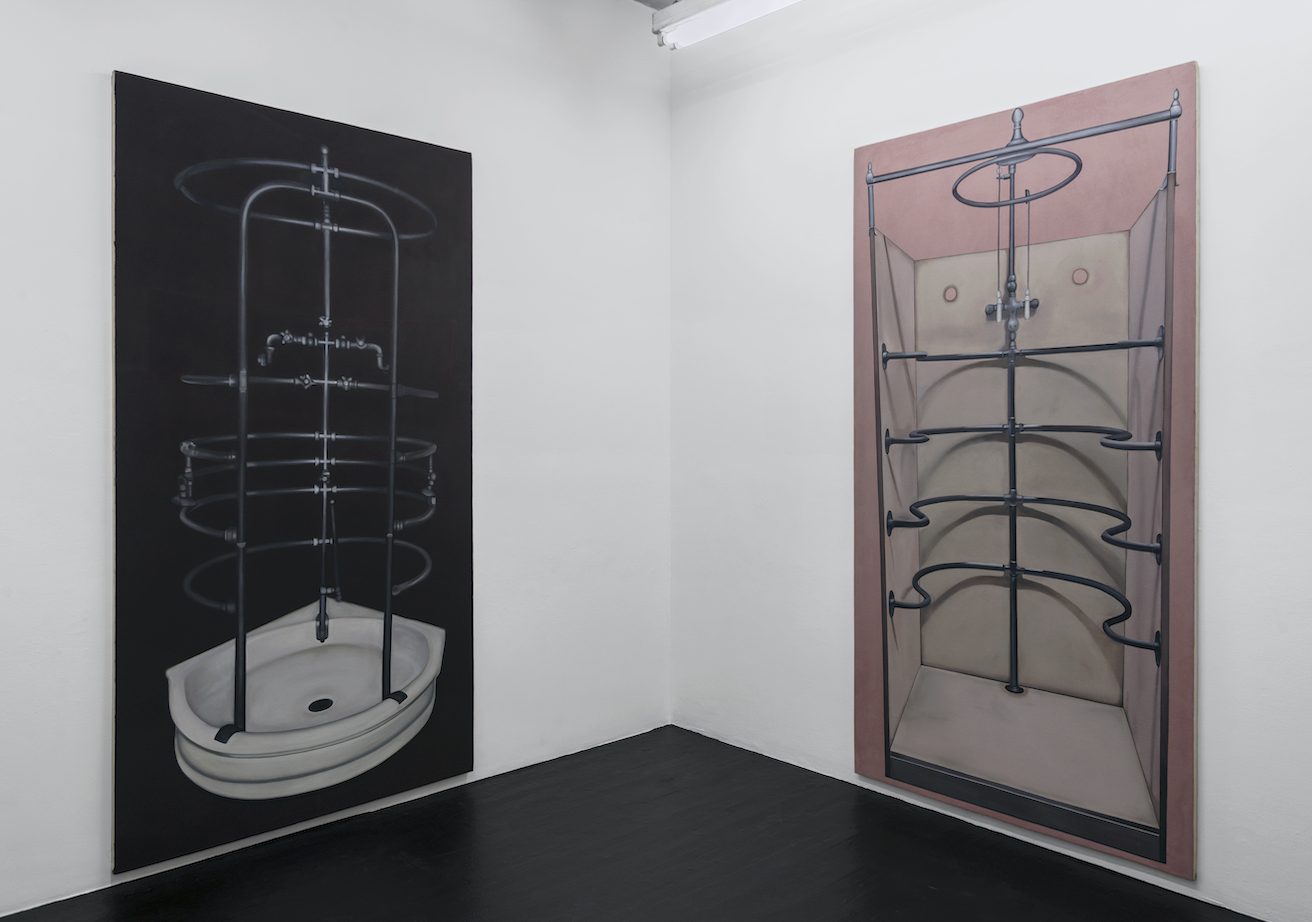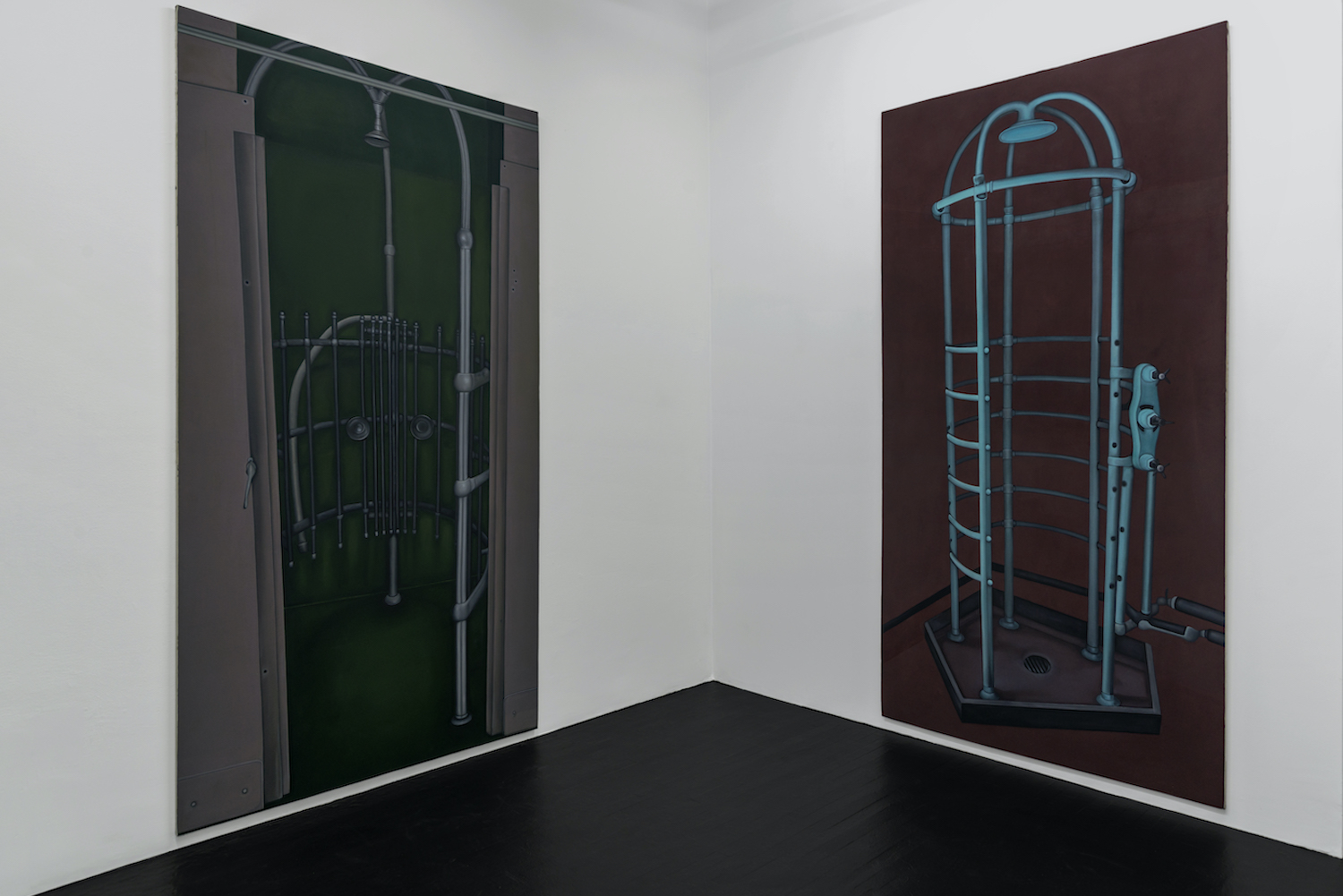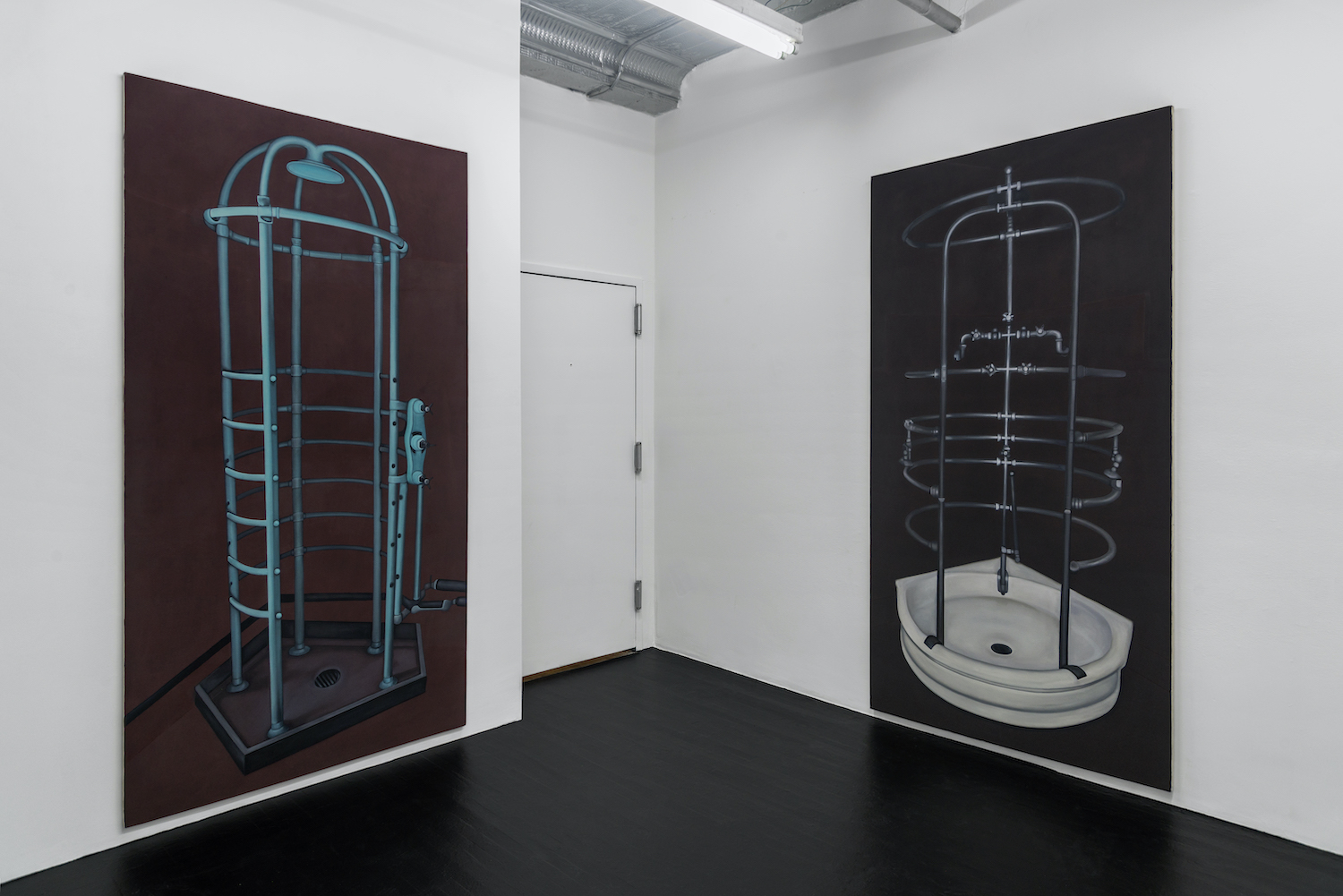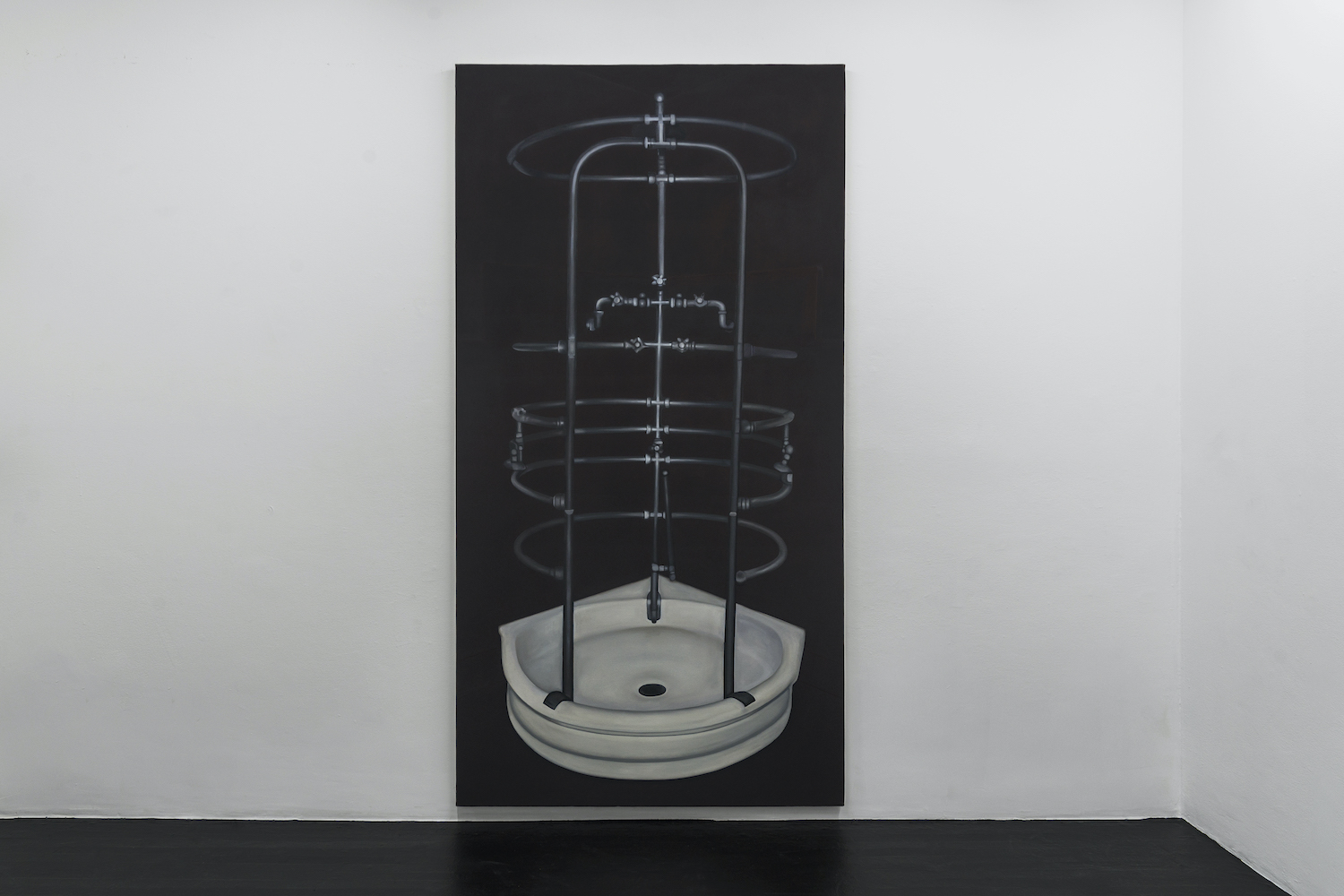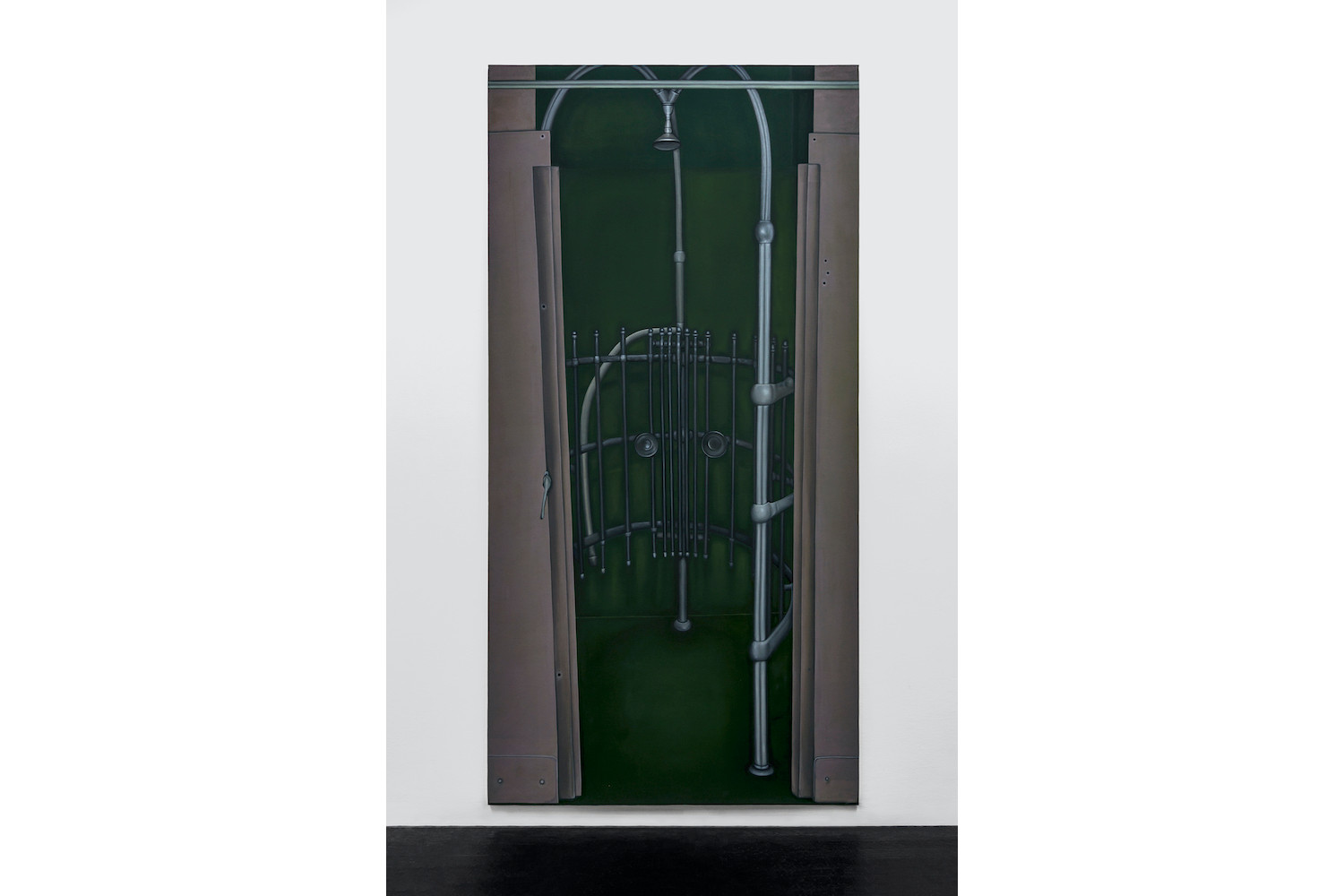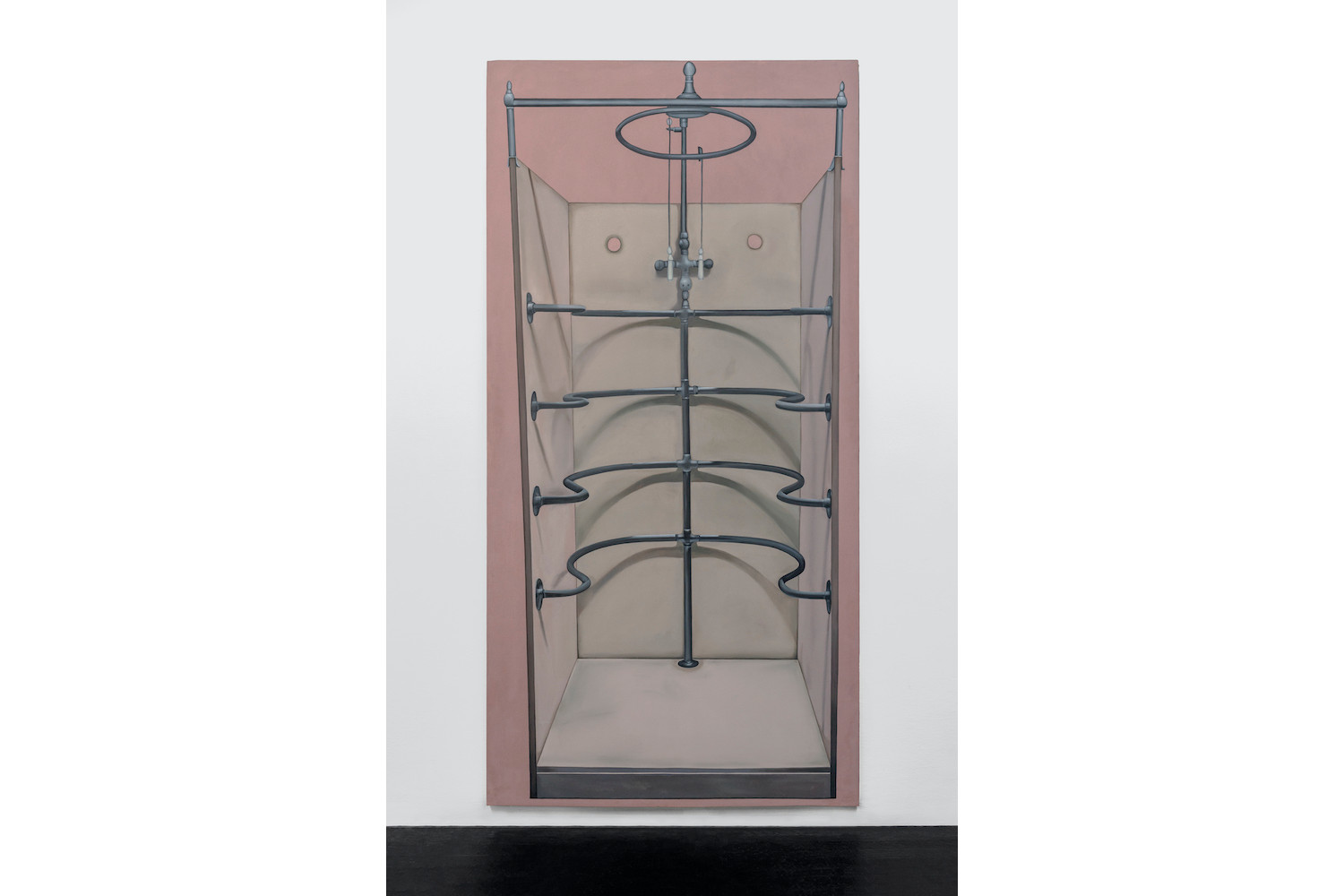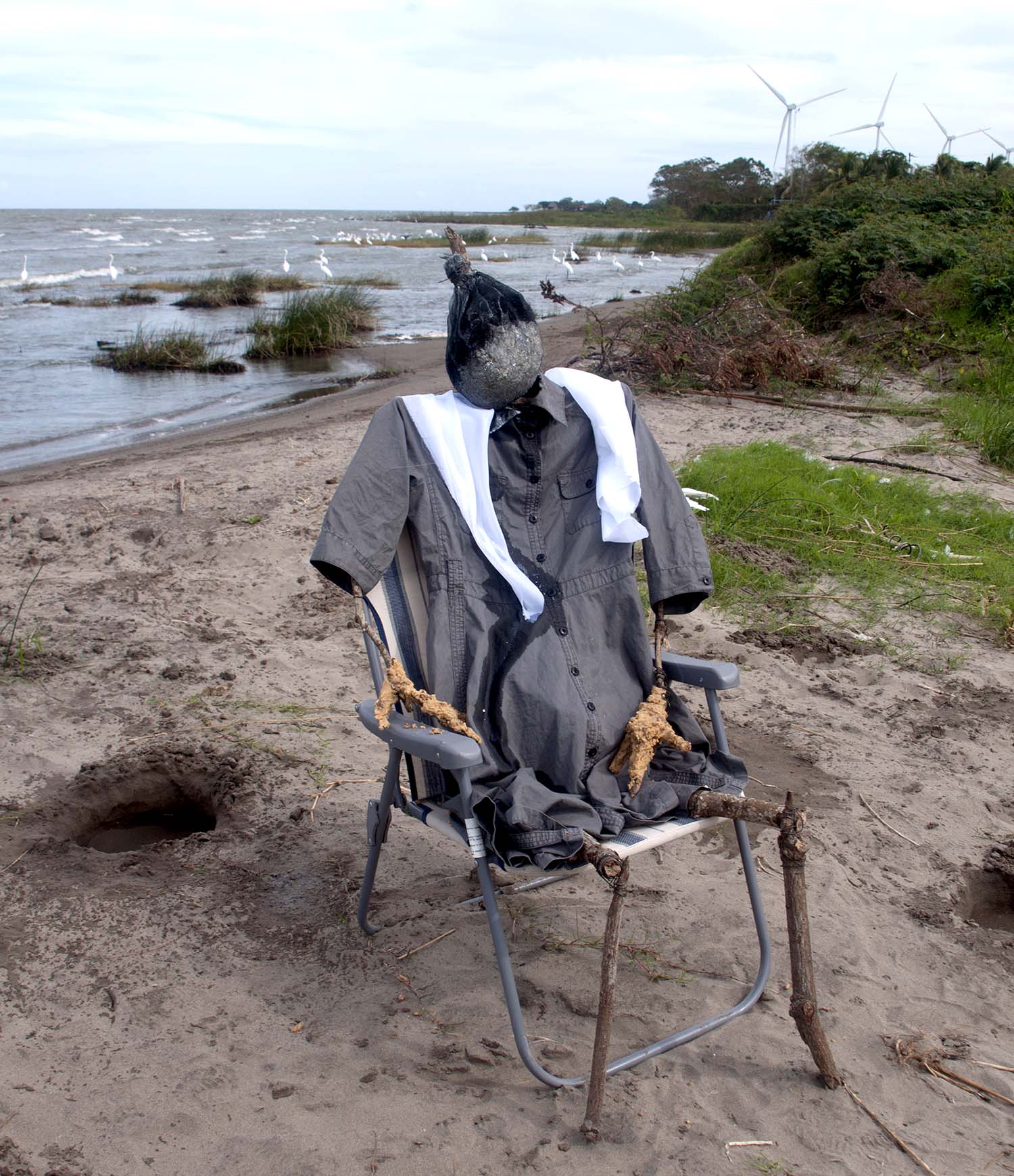Hollywood often portrays sanatoriums as cold, clinical places — just think of One Flew Over the Cuckoo’s Nest or, more recently, A Cure for Wellness — where showering and hydrotherapy hide sinister potential. Who wants to be hosed down like an animal in a zoo or be forced to undergo uncomfortable hot water treatment? Megan Marrin’s recent suite of life-size “shower” paintings call to mind “wellness” and “cure therapies” of old, when it was thought that water (in some form) would alleviate a mental or physical ailment, imagined or real. Instead of offering a menacing interpretation of such outdated devices as the “rib shower” — with its curving, cage-like structure — the four oil paintings of “Convalescence” are uncannily welcoming, providing an opportunity for repose in today’s scary world.
The Rest Cure (2020), like the other paintings in the show, stands at 239 centimeters high (and about half as wide), making for an imposing painting. Set within a pink and dusky beige cubicle, it shows four curved, horizontal metal bars running from the viewer’s knee to neck height, connected by a central bar going up the middle of the contraption, topped with a steely halo shape. Two ivory-colored handles hanging down from it on dainty chains harken back to a possibly Edwardian design, allowing us (in our imaginations) to control the flow of water. Against the flesh tones that encase it, the metal looks like a hollowed-out rib cage, while the two round holes (possibly vents) at the top of the shower add further human-oriented features to the composition. Indeed, it’s not just the shape of the shower that is suggestive of humanness, but also its scale. Furthermore, each painting is hung just a few inches off the floor, a natural level for walking into an actual shower, adding to the relatability of the image. But the painting also evokes our vulnerability, by reminding us that sometimes we need to be cured. Haven’t we all felt a little tired, a little worse for the wear, and what better way to alleviate that feeling, if only for a moment, than a hot shower or bath?
The three remaining works show a similarly shaped shower: The Regimen (2020) is a slightly more ornate structure set against a black background with a porcelain-looking basin, while The Reclamation (2020) is a narrow shower in turquoise with a black, plastic-looking bottom against a burgundy background. While this latter work comes close to looking like something we might expect from a horror film, with its constricting shape and odd-looking (to these contemporary eyes anyway) cranking device on the side, it too somehow beckons us to step in — to be reclaimed. Many of those who went to sanatoriums, suffering from “softening of the brain,” “hysteria,” or other supposed ailments, didn’t belong in such places, and Marrin’s paintings prompt not only the recognition of our fragility, but also of the tenuousness of our medicines and treatments — something the coronavirus is doing now too.
Marrin has painted bird cages and iron maidens — restrictive devices for punishment — in the past, and as with those works, it is the absence of something (here a human figure) that helps to generate a sense of longing and susceptibility, but also of warmth and rejuvenation. Upon seeing the four paintings in Convalescence, we feel vulnerable and hopeful because they remind us that we all need to take a break sometimes, to get away from it all and, hopefully, recover. And after the recent elections in the US, I’m all for some renewal of body and mind.

